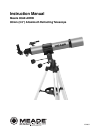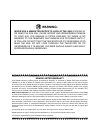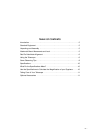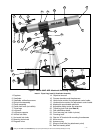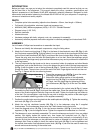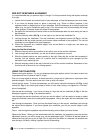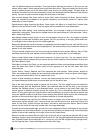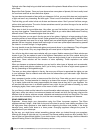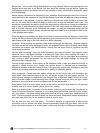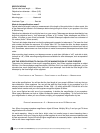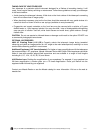
– 9 –
Looking at or near the Sunwill cause irreversabledamage to your eye. Do not point this telescope at or near the Sun. Do not look through the telescope as it is moving.
Barlow lens: You can also change magnification by using a Barlow. Remove the eyepiece from the
diagonal mirror and slide in the Barlow. And then place the eyepiece into the Barlow. Tighten the
thumbscrews to secure the Barlow lens and the eyepiece in place. A Barlow lens doubles the power
of your telescope.
Meade offers a complete line of eyepieces for your telescope. Most astronomers have four or five low-
power and high power eyepieces to view different objects and to cope with different viewing conditions.
Objects move in the eyepiece: If you are observing an astronomical object (the Moon, a planet, star,
etc.) you will notice that the object will begin to move slowly through the telescopic field of view. This
movement is caused by the rotation of the Earth and makes an object move through the telescope’s
field of view. To keep astronomical objects centered in the field, simply move the telescope on one or
both of its axes—vertically and/or horizontally as needed—try using the telescopes coarse and fine
adjustment controls. At higher powers, astronomical objects will seem to move through the field of view
of the eyepiece more rapidly.
Place the object to be viewed at the edge of the field and, without touching the telescope, watch it drift
through the field to the other side before repositioning the telescope so that the object to be viewed is
again placed at the edge of the field, ready to be further observed.
Vibrations: Avoid touching the eyepiece while observing through the telescope. Vibrations resulting
from such contact will cause the image to move. Avoid observing sites where vibrations cause image
movement (for example, near railroad tracks). Viewing from the upper floors of a building may also
cause image movement.
Let your eyes “dark-adapt”: Allow five or ten minutes for your eyes to become “dark adapted” before
observing. Use a red-filtered flashlight to protect your night vision when reading star maps, or
inspecting the telescope. Do not use use a regular flash-light or turn on other lights when observing
with a group of other astronomers. You can make your own red filtered flashlight by taping red
cellophane over a flashlight lens.
Viewing through windows: Avoid setting up the telescope inside a room and observing through an
opened or closed window pane. Images may appear blurred or distorted due to temperature
differences between inside and outside air. Also, it is a good idea to allow your telescope to reach the
ambient (surrounding) outside temperature before starting an observing session.
When to observe: Planets and other objects viewed low on the horizon often lack sharpness—the
same object, when observed higher in the sky, will appear sharper and have greater contrast. Try
reducing power (change your eyepiece) if your image is fuzzy or shimmers. Keep in mind that a bright,
clear, but smaller image is more interesting than a larger, dimmer, fuzzy one. Using too high a power
eyepiece is one of the most common mistakes made by new astronomers.
Dress Warm: Even on summer nights, the air can feel cool or cold as the night wears on. It is important
to dress warm or to have a sweater
, jacket, gloves, etc., nearby.
Know your observing site: If possible, know the location where you will be observing. Pay attention to
holes in the ground and other obstacles. Is it a location where wild animals, such as skunks, snakes,
etc., may appear? Are there viewing obstructions such as tall trees, street lights, headlights and so
forth? The best locations are dark locations, the darker the better. Deep space objects are easiest to
see under dark skies. But it is still possible to observe even in a city.
Surf the Web and visit your local library: The internet contains a huge amount of astronomical
information, both for children and adults. Check out astronomy books from your library
. Look for star
charts—these are available on a monthly basis in Astronomy and Sky and Telescope magazines.



